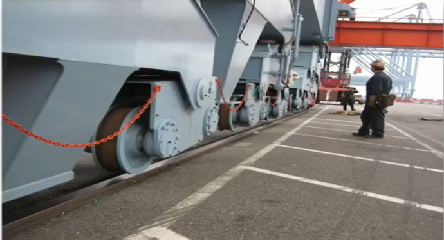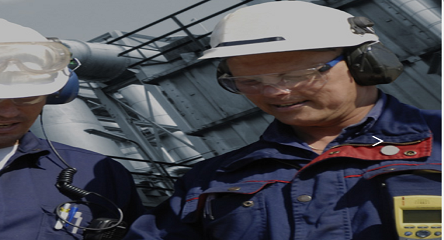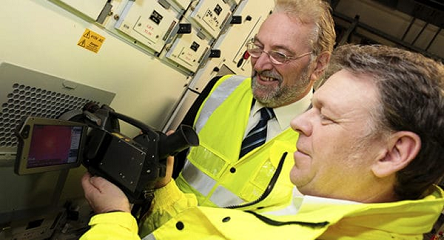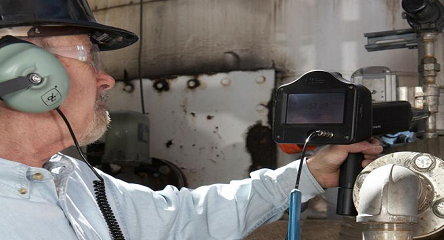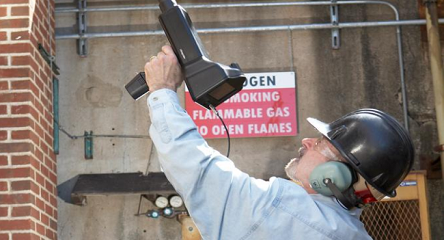Leaks can form practically anywhere in a plant. This includes pressurized systems and systems under a vacuum. Leaks can occur internally through valves and steam traps, in heat exchanger and condenser tubes, or to the atmosphere. While it is important to locate potential safety hazards from leaks, the loss of gases through leaks can be very costly.
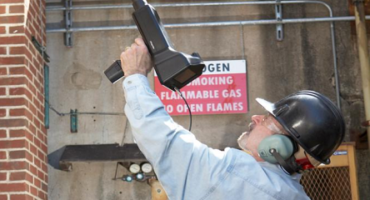
Leaks can form practically anywhere in a plant. This includes pressurized systems and systems under a vacuum. Leaks can occur internally through valves and steam traps, in heat exchanger and condenser tubes, or to the atmosphere. While it is important to locate potential safety hazards from leaks, the loss of gases through leaks can be very costly.
One major concept to understand is that everything leaks. Determination of when and what types of leak to look for depends on many variables, such as economies, safety, performance, the impact on related objects or products (for example quality), as well as the economies of, and the ability to repair the leak once it has been found.
Leakage occurs when a material can move from one medium to another. In pressure or a vacuum leak, the fluid (liquid or gas) moves from the high-pressure side through the leak orifice to the low-pressure side. When it enters the low-pressure point, a turbulent flow is produced. Turbulence disturbs the air molecules producing white noise, which contains both low- and high-frequency components. In most plant environments surrounding sounds can mask this noise. The audible component, being a larger waveform, can appear omnidirectional, which makes locating and identifying a leak source difficult.
The ultrasonic component has attributes that make leak detection much easier. As a shortwave, weak signal, the amplitude falls off rapidly from the source. It also is a longitudinal waveform and is considered relatively directional. Since ultrasonic sensors do not detect the lower-frequency components, locating and identifying a leak can be very effective, even in noisy plant environments.
What Affects the Detectability of a Leak?
There are several factors that make a leak detectable using ultrasound.
1. Turbulence
There are two types of viscous flow: turbulent and laminar. Laminar flow can be defined as: ‘Fluid flow in which the fluid travels smoothly or in regular paths. The velocity, pressure, and other flow properties at each point in the fluid remain constant’.
Turbulent flow is defined as: ‘A fluid flow in which the velocity at a given point varies erratically in magnitude and direction’.
Ultrasound will therefore not detect laminar flow (as found, for example, in air conditioning diffusers) but will detect turbulent flow. Most leak situations will produce a turbulent flow. However, there are other variables that must be taken into consideration to determine if there is enough turbulence to produce a ‘detectable’ ultrasound for a leak to be found.
2. Orifice Shape
Regardless of orifice size, it is important to remember that a smooth orifice will not produce as much turbulence as a jagged orifice. An orifice with multiple edges can affect fluid flow and produce more turbulence, which is referred to as the ‘reed effect’. A narrow ‘slit’ opening, such as a thread path leak, will not produce as much turbulence as a ‘pin hole’ leak.
3. Viscosity of Fluid
The viscosity of a fluid is its resistance to flow, a measure of the fluid’s internal friction. For example, if we compare the viscosity of water to steam, water has a higher resistance to flow. The factors that influence flow through leak sites are the viscosity of the fluid, the pressure difference causing the flow, and the length and cross-section of the leak path. For example, at the same pressure, air will leak through a leak site significantly more than a fluid such as water or oil. This is important to understand should you be presented with a leak in which the fluid has a high viscosity but not enough pressure to produce a turbulent leak. For example, when presented with a water leak underground, changing the fluid to gas will greatly assist in locating the leak.
4. Pressure Differential
Pressure differential is a significant issue when performing most leak tests. A pressure differential is created when pressure across a leak is changed and the flow changes in proportion to the differences of the square of the absolute pressure. When performing airborne ultrasound leak inspection, it is important to consider the viscous flow of a given pressure differential acting across the leak.
5. Distance from the Leak
Another factor influencing the detectability of a leak is the distance from the leak. The intensity of the ultrasound signal decreases as the distance from the source sending the ultrasound increases. Intensity refers to the relative strength of a sound signal at a certain point.
Accessibility to the Leak
Due to the shortwave nature of ultrasound, the amplitude of the emission drops exponentially as the sound travels from the source. Distance of detection becomes a factor. If an inspector cannot get within detection distance of a leak, it will be hard to find it. It is important that the leak is accessible. Providing it is safe, the closer an inspector can get to the leak the better the chances are of detecting and evaluating it. If a leak is buried behind several structures, it will have a tendency to reflect off the various structures. The ultrasound from the leak is then sent off in other directions, bouncing from one object to another and consequently confusing the inspector as to where the source of the leak is. In some cases, ultrasound may be hitting material that absorbs the sound waves. The further the leak has to travel, the more likely the leak is to attenuate and weaken. Get closer to the leak source, remove interfering objects and use aids to gain access to the leak, such as a contact probe for structure-borne sounds found in enclosed cabinets, a parabolic microphone, or flexible probes.
If a leak occurs in a confined space, be sure to follow all safety procedures. These are very hazardous conditions and any mistake can be fatal.
Finding the Leak
Specialized modules may be called for, such as a parabolic microphone for long-distance scanning, a close-focus module for close-up scanning, or flexible probes for hard-to-access scanning.
The preferred method for locating a leak is called ‘gross to fine’. This is used to pinpoint and identify the location of leaks. Start at maximum sensitivity and scan by moving the probe around in all directions to locate a leak sound. This will be heard as a ‘rushing’ noise. Follow the sound to the loudest point. As you move, the leak noise might increase, making it difficult to identify the direction of the leak. Reduce the sensitivity as you move closer to the area and listen for the loudest leak signal. Scan all around the suspected leak area. Whenever it is difficult to determine the direction of the leak sound, adjust the sensitivity up if the sound level is too low or down if the sound level is too high. It is possible to pinpoint the exact site of the leak if you scan completely around the area of interest. Once near the site, place the rubber focusing probe over the scanning module and continue to move in the direction of the leak. To confirm, if possible press the tip of the probe over the suspected site. If the leak sound continues or increases in volume, you have found the leak; if the sound level drops, continue looking.
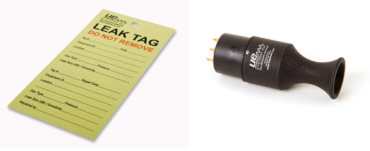
Compressed Air Leak Surveys
One area that can show fast returns is through establishing a compressed air leak survey program. In fact, in the USA, the Department of Energy has estimated that of all the compressed air used in the USA by industry, about 30% was lost to leaks. They estimate this to cost from 1 to 3.2 billion US dollars annually. It is not uncommon to hear of reports by users who, after performing a leak survey and repairing the leaks, have eliminated the use of an extra compressor.
Compressed gas survey software or mobile applications organize results so that when leak data is recorded, the software or app will calculate the losses per leak in terms of money lost. It can also provide information on gases that contribute to the carbon footprint.
In addition to the results of the survey, the software or app will keep tabs on what has been repaired and what leaks have not. This helps users to manage their survey and provides information on actual money saved and carbon gas emissions cut.
Conclusion
When used correctly, ultrasound instruments are very powerful tools to detect leaks and can greatly contribute to energy-saving efforts. Even though leak detection with ultrasound is a very simple and straightforward exercise, it is always advisable for maintenance professionals to get proper training, which will greatly enhance their skills with the ultrasonic instrument and the creation of leak reports.



